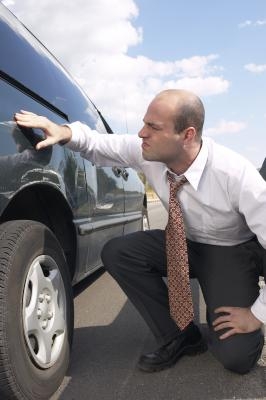
The paint on most cars consists of three layers before getting down to the metal of the frame. The first layer is primer, followed by the colored paint. Protecting the layer of paint is a transparent clearcoat. Abrasions in a car's body mostly happen in this clearcoat layer. The light catches on these abrasions, often making the scratch appear deeper than it is. Sometimes the abrasion extends beyond the clearcoat and into the paint. Either way, you can remove or minimize the appearance of these abrasions with some elbow grease and a few common
automotive supplies.
Wash the car with a car detergent. Washing the area removes all surface dust and dirt from the car's body, preventing additional scratching.
Rub shoe polish into the scratch. Choose a shoe polish color that stands out well against the paint. This will act as a guide during sanding so that you do not sand too deeply into the car's paint.
Sand down the scratch. Use a fine wet/dry sandpaper of at least 2000 grit or higher. Use plenty of water with a bit of detergent so that your sandpaper slips easier over the car's surface. Sand until the shoe polish disappears.
Apply a rubbing compound, which is a finer substance than the sandpaper. The process of rubbing out a scratch is much the same as rock polishing. You start working with your coarsest grit and use progressively finer grit until the surface is smooth. Use an electric buffer to apply the rubbing compound with a felt applicator. Wash the surface again with your auto detergent to remove any compound.
Polish the surface. Switch to a foam applicator pad on your buffer and apply a fine polishing compound to the scratch. Use a microfiber cloth to remove any excess compound.
Wax the car. Now that you have removed the abrasion, apply a wax to protect the area.